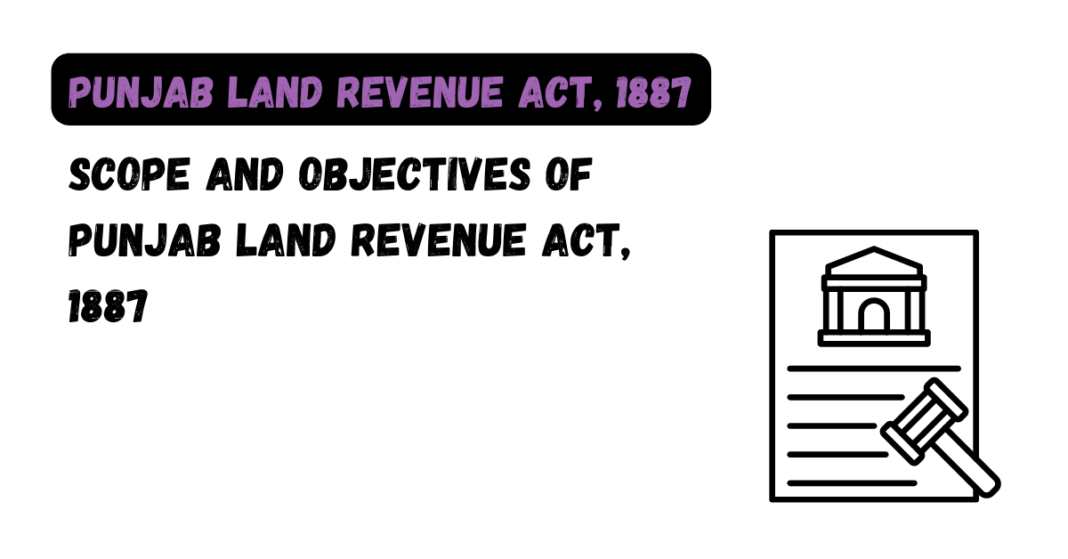The scope and objectives of the Punjab Land Revenue Act, 1887, were to establish a comprehensive system for the assessment and collection of land revenue in the province of Punjab. The Act aimed to provide a framework for the maintenance of land records, settlement of revenue disputes, and the creation of revenue courts.
Scope of Punjab Land Revenue Act, 1887
- Assessment and collection of land revenue: The Act provides for the assessment and collection of land revenue from the owners of land in Punjab. It lays down the rules and procedures for determining the land’s productivity and fixing the revenue rates.
- Maintenance of land records: The Act lays down provisions for the preparation and maintenance of land records, including land maps, land registers, and revenue records.
- Revenue administration: The Act establishes a system of revenue administration in the province and provides for the appointment of revenue officers, their powers, and their duties.
- Tenancy: The Act recognizes and regulates the rights and obligations of tenants and landowners. It provides for the creation and transfer of tenancies and lays down the rules for determining rent.
- Settlement of revenue disputes: The Act provides for the establishment of revenue courts to settle disputes related to land revenue. These courts are authorized to hear and decide revenue-related cases and to enforce their decisions.
- Land use planning and development: The Act empowers the government to regulate the use of land and to undertake land use planning and development.
- Miscellaneous provisions: The Act also covers various other aspects of land revenue administration, such as the management of waste and forest lands, assessment of water rates, and the maintenance of boundary marks.
Objectives of Punjab Land Revenue Act, 1887
- Assessment and collection of land revenue: The Act aimed to establish a mechanism for assessing and collecting land revenue from the owners of land in Punjab. It provided for the classification of land and the determination of revenue rates based on the land’s productivity.
- Maintenance of land records: The Act established a system for maintaining land records, which included the preparation of maps and surveys, registration of landowners, and the maintenance of revenue records.
- Settlement of revenue disputes: The Act provided for the creation of revenue courts to settle revenue disputes between landowners and the government. The courts were empowered to hear and decide on revenue-related matters and to enforce their decisions.
- Protection of tenants’ rights: The Act provided some protection to tenants by recognizing their rights and regulating their relationship with landowners.
- Land use planning and development: The Act empowered the government to regulate the use of land and to undertake land use planning and development.





